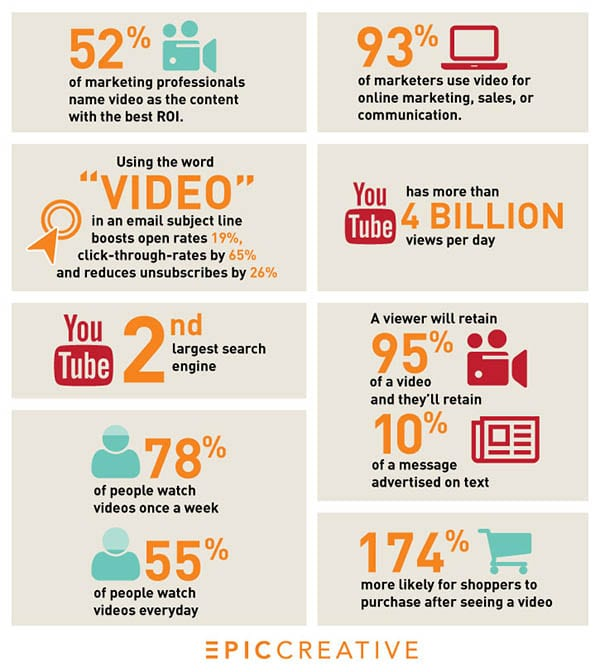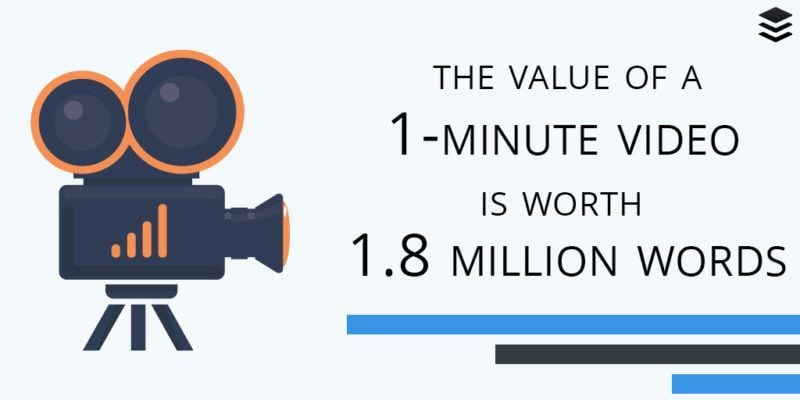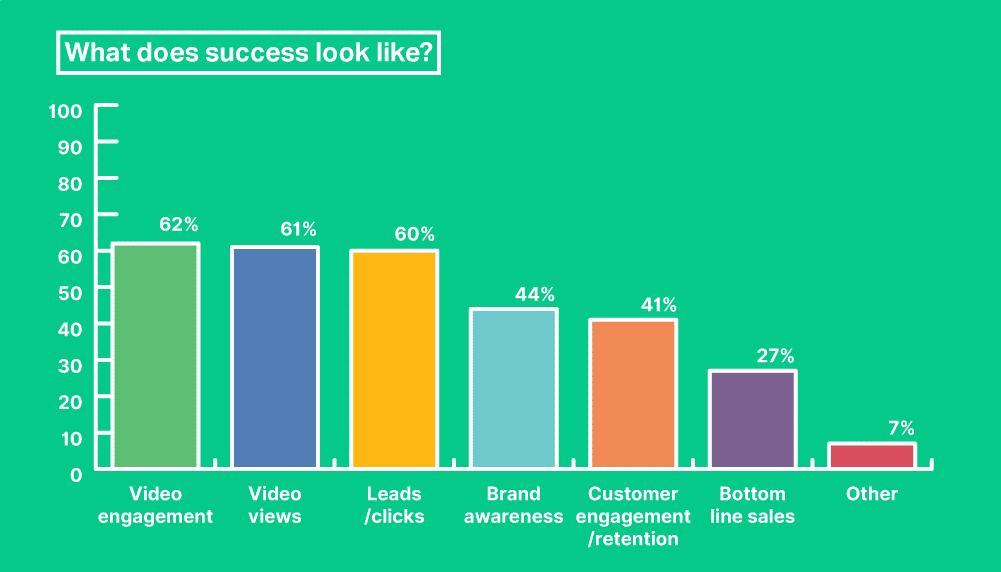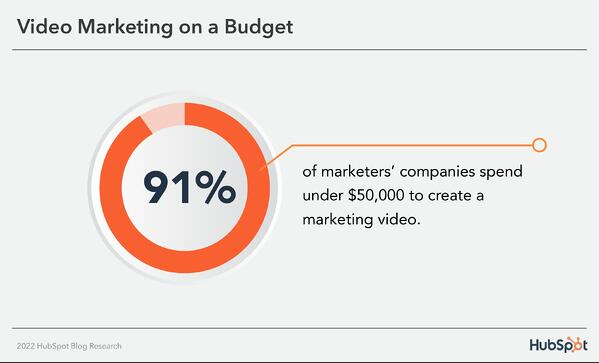2023 Video Marketing Guide? Why You Need To Start Video Marketing

We live in an age where everything is content, and everyone is a creator. Besides doing business in their respective industry, every company is creating content. Wherever you look, a brand is fighting for your attention, rolling out new content on various channels in various forms, be it text, audio, or video.
Amongst all the mediums, the one that undoubtedly stands out is video. That’s because visuals have a higher retention rate and are processed faster in our brains than text. No wonder marketers find that videos help them in multiple ways, from generating leads and boosting sales to building a brand reputation and increasing their product/service understanding. Thus, companies are investing in a solid video marketing strategy to achieve their goals.

No matter your end goal, videos will only work in your favor if you use them correctly. In this video marketing guide, we present some strategies you can leverage to your advantage.
What is Video Marketing?
Simply put, video marketing uses the medium of video to let a brand engage with its audience and persuade them to purchase offered products and/or services. It gives them a chance to be more expressive about its offerings and interact in a personalized manner with the audience.
At its core, video marketing is an aspect of the digital marketing toolbox. It lets a brand create a bond with its customers by optimizing the content according to their needs and wants.
Marketing videos are not only about high-end commercial videos. They can be of a few types like:
- Demo videos
- Brand videos
- How-to videos/explainer videos
- Sponsored videos
- Animation videos
- Live videos or webinars
- Customer testimonials

Why is Video Marketing Important?
Video offers a major benefit compared to other formats like text or voice. And that is its multi-sensory experience. The involvement of multiple senses gives rise to the involvement of multiple emotions. And this ultimately leads to the viewer remembering more of what they have seen. Emotional engagement is one of the reasons why video marketing proves to be so effective.
Videos can also provide more information in less amount of time. Let’s take a general example. Reading a novel will take more time than watching a movie based on the same book. And you are more likely to retain more information about the story and plot.

From engaging to educating customers, video marketing guide serves multiple purposes. Not only that, it helps immensely in increasing brand visibility. Based on a survey conducted by Wyzowl, here are some statistics on the importance of video marketing and a guide to video marketing:
- 88% of people said they were convinced to buy a product after watching a brand video.
- 94% of marketers found that video has helped the user understand their product/service in a better way.
- People are twice as likely to share a video with their known ones than any other content format.
Building a Video Marketing Strategy
You need to consider certain elements before starting your video marketing journey and building a video marketing guide:
1. Set goals before you start
Having a clear goal in mind is the first step in achieving it. Find out your purpose for creating videos. There can be multiple reasons. According to stats, 62% of marketers say they consider a video a success when they see customer engagement (shares, likes, and comments). While 60% consider generating leads or clicks as a factor in success.
Figure out if you are making videos to create brand awareness or increase customer engagement or generate leads. These are only a few examples; however, the reasons can be many.

2. Find your audience
Once you have your goals in mind, finding your target audience is next. Long-term businesses already know their audience, but new ones might have to find who they are catering to. Creating buyer personas can be helpful here.
You will also need to find where your target audience spends most of their time.
3. Have a plan for the video
Planning a video can mean a lot of things. You will have to figure out the video’s tone, whether you want it to have a fun, engaging tone or a professional, serious tone. It can vary depending on the type of video and your desired end goal. Usually, people connect more when the video is telling a story. So, you can use that to your advantage.
Once you have a set tone, you will need to look at the technical aspects of video production, like scripting, casting, sounds, lights, and other things. Using the right set of elements can make or break a video. It’s best to hire a video agency to help you with the production.
4. Timeline and budget
Video making can be time-consuming and expensive. It also requires a team of people from different areas of expertise. Thus, this is where you will need proper planning and management.
Schedule a step-by-step timeline for the project and move along with it. This will include the whole process, from pre-production to post-production. It will not only keep the stress at bay but will also be helpful in cases of unforeseen changes.
The next important thing is to set a budget. Figure out how much you want to invest in video production. This can vary based on the type of video, runtime, graphic design, location, and more.

5. Distribution platform
Just like you need to have a goal and target audience before you start making videos, you will also need to decide on the platform where you will publish your videos. Analyze which channels can provide you with the best results. This will depend on your target audience and resources.
People on LinkedIn prefer explainer videos to get an idea of the business. The platform also lets you broadcast live events.
Facebook is more text or picture-oriented, so you will need to put videos that stand out. For example, Airbnb posts videos of different places with travel tips that let the page’s followers connect with the hosts.
On Instagram, you can put up short teaser videos with a link to the website or YouTube channel which has the full-length video.
Some Tips and Tricks For Your Video Marketing Guide
- Use video SEO to optimize your videos and rank higher on search results.
- Add transcription/captions/subtitles to your videos, as many people watch videos with no sounds.
- Add a call to action (CTA) at the video’s start, middle, or end.
- Measure your success. Invest more time in analytics to figure out what works for you and what can be improved.
Initially, videos can be a little taxing. But with the help of a solid video marketing strategy and this video marketing guide, you can start achieving your goals. No wonder it is one of the go-to mediums for building a brand reputation or generating leads and converting those leads into customers.
FAQs
1. View count
2. Play rate
3. Click-through rate (CTR)
4. Engagement
5. Sharing on social media
6. Conversion rate
7. Feedback like reaction or comment
1. Use cover images or thumbnails
2. Add clear, catchy, and compelling titles
3. Move quickly, and don’t take too much time explaining a single thing over and over again
4. Use statistics and facts
5. Use pictures and sounds
6. Add subtitles
There is no perfect length for the video. It can vary depending on the type of video, distribution channel, the motive of the video, the industry, and other reasons. However, the best advice is to get to the main topic quickly. And be clear and correct with the information. Keep the videos short if you are in the initial stages of video marketing.
People have short attention spans. They want you to get to the point quickly. Shorter videos have a higher retention rate. This means the user might watch the video all the way through.
Latest Blogs
Explore how Google’s 2025 AI search updates triggered ranking chaos. Learn actionable strategies to adapt your SEO for AI Overviews, zero-click searches, and SERP volatility. Stay ahead now.
Learn how to rank on AI search engines like ChatGPT, Perplexity, and Gemini by optimizing your content for authority, structure, and relevance. Stay ahead in AI-driven search with this strategic guide.
Explore the best healthcare SEO services for your medical practice. Improve online visibility and effectively reach more patients in need of your services.
Get your hands on the latest news!
Similar Posts

Video
6 mins read
Reel or Real: Addressing the Animated Vs. Live-Action Video Debate

Video
7 mins read
All You Need to Know About Youtube Shorts

Video
6 mins read